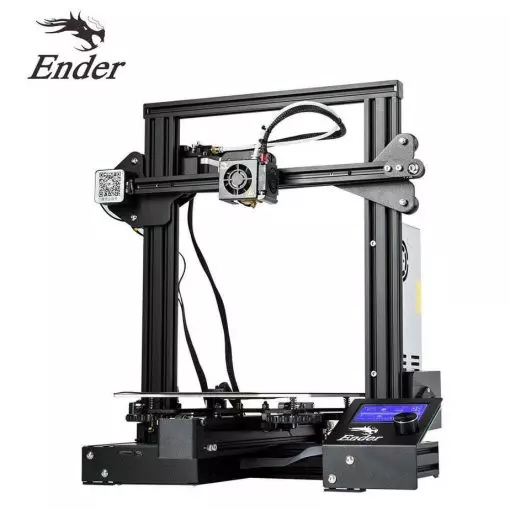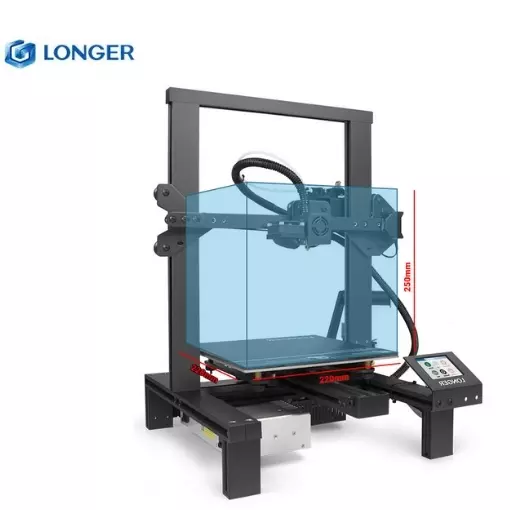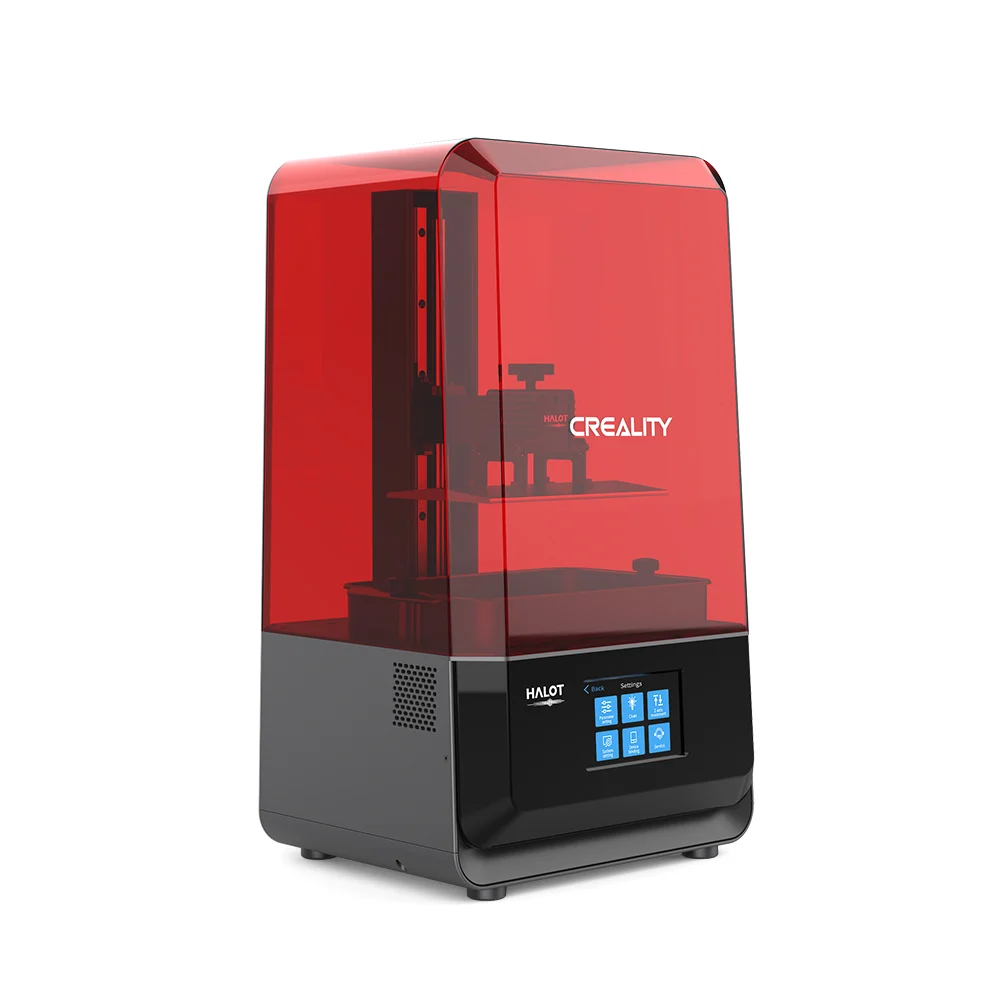Compare Ender 3 vs LK4 vs Halot Lite
Comparison between the best 3D printers
Choose the best 3D printer at the best price. The cheapest 3D printers are here.
Buy a 3D printer here with 3D Fila.
 |
 |
 |
|
| Model | Ender 3[BUY Ender 3] |
LK4 |
Halot Lite |
| Printing Material | Filament | Filament | Resin |
| Estimated price | $210,00 | $200,00 | $400,00 |
| Fabricante | Creality 3D | Longer 3D | Creality 3D |
| Release Year | 2018 | 2019 | 2021 |
| Print Volume [mm] | 220x220x250 | 220x220x250 | 192x120x200 |
| Printer Size [mm] | 440x440x465 | 402x425x505 | 330x301x572 |
| Weight [kg] | 6,62 | 7,8 | 10,6 |
| Power Loss Recovery | NO | YES | NO |
| Maximum Resolution [mm] | 0,1 | 0,1 | 0,01 |
| Processor | 8 bits | 8 bits | |
| Display | Mono | Touchscreen TFT 2,8'' | Display touchscreen 5'' |
| Power Supply | 24V / 270W | 12V / 360W | |
| Connectivity | SD / USB | SD / USB | SD / USB |
| Operating systems | Windows, Mac, Linux | Windows, Mac, Linux | Windows, Mac, Linux |
| Date of registration in the system | 2021-04-13 | 2021-04-15 | 2022-11-04 |
| Release date | 2018 | 2019 | 2021 |
| Extra features | The Ender 3 V1 is a DIY assembly 3D printer, a sales leader since 2017, standing out for its cost-benefit. With a wide printing capacity, it has a CNC machined structure for precision and stability. It offers high-precision prints with low noise, thanks to its innovative V-profile and pulleys. It has a self-adhesive magnetic platform for easy removal of models and excellent adhesion. The Ender 3 heats up quickly, reaching 100°C in 5 minutes, ideal for agile prints. It includes protection against power failures, allowing you to resume printing after interruptions, saving time and material. | The Longer LK4 is a versatile 3D printer capable of working with a wide range of filaments, such as PLA, ABS, TPU, copper, wood and carbon fiber, thanks to its 0.4mm nozzle and heated bed up to 110°C. With a printing accuracy of between 0.05-0.4mm, it stands out for its solid construction with an aluminum frame, weighing around 7kg, and a robust 24V and 15A power supply. The kit includes an Allen key, a 7/10 key, a microSD card with USB adapter, a spatula, cable ties, a power cable, 5m of filament and a spare filament end sensor. Assembly is simplified, with around 90% of the equipment pre-assembled, and detailed instructions assist in the process. Special features include print recovery after power failure, a filament end sensor, a super-adhesive printing surface and an intuitive color touchscreen display. The design features smooth profiles for easy assembly, and the position of the filament holder optimizes the filament path to the extruder. The LK4 is a solid choice for 3D printing enthusiasts looking for quality and versatility. | Crealitys Halot Lite printer stands out in the mid-size resin 3D printing segment, with a build volume of 192 x 120 x 200 mm and 50 micron resolution. It offers a monochrome LCD for fast and durable printing, and an upgraded light source that ensures over 80% uniformity across the print bed. It includes Wi-Fi connectivity for remote control and updates, an ARM Cortex CPU for efficient performance, and is compatible with Halot Box and Lychee slicing software. It also has an activated carbon filter to reduce odors. |
| Support for multiple colors and materials (AMS and CFS) | NO | NO | NO |
Notes * |
|||
| Cost-benefit | 6 / 10 | 7 / 10 | 8 / 10 |
| Hardware | 0.5 / 10 | 2 / 10 | 1.2 / 10 |
| Screen | . | . | . |
| Print volume | 3 / 10 | 3 / 10 | 3 / 10 |
| Performance | 1 / 10 | 1 / 10 | 9 / 10 |
| [BUY Ender 3] |
Conclusion |
| In comparing the Ender 3, LK4, and Halot Lite 3D printers, several key factors emerge that can help potential buyers make an informed decision based on their specific needs and budget. 1. **Price and Value**: The Ender 3 and LK4 stand out as the most affordable options, both in the same price range and suited for users looking for basic 3D printing capabilities. While they provide solid performance, the Halot Lite, being a more expensive option, offers enhanced resolution and features tailored for resin printing. 2. **Print Volume and Performance**: All three models boast similar print volumes, but the Halot Lite excels in performance with its high-resolution capabilities. This makes it a compelling choice for those focused on detailed prints. In contrast, the Ender 3 and LK4 provide more general functionality, making them ideal for hobbyists and beginners. 3. **Features and Usability**: The LK4 presents a favorable balance of features with its power loss recovery and user-friendly touchscreen, making it a practical choice for those interested in ease of use. The Ender 3, while lacking some advanced features, is lauded for its cost-benefit ratio and solid construction. 4. **Assembly and Support**: The LK4 offers a simpler assembly process than the Ender 3, which may appeal to users who prefer a hassle-free setup. The Halot Lite, although more complex, caters to an audience looking for specialized applications like resin printing. 5. **Construction Quality and Portability**: With the LK4 being the heaviest, it may not be as portable as the other two. However, this weight often translates to stability during printing, which is an essential factor to consider for print quality. In conclusion, the choice among these three printers largely depends on the user's priorities. For budget-conscious buyers or those new to 3D printing, the Ender 3 and LK4 provide excellent value and versatility. The Halot Lite, on the other hand, is tailored for users willing to invest more for superior performance in resin printing. Overall, each printer has its strengths, making them suitable for different segments of the 3D printing community. |

